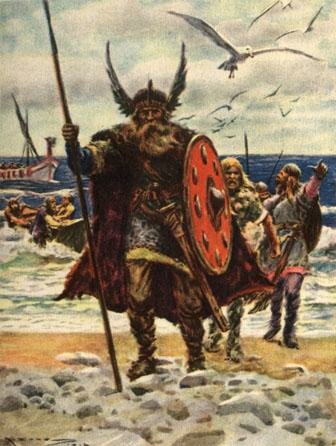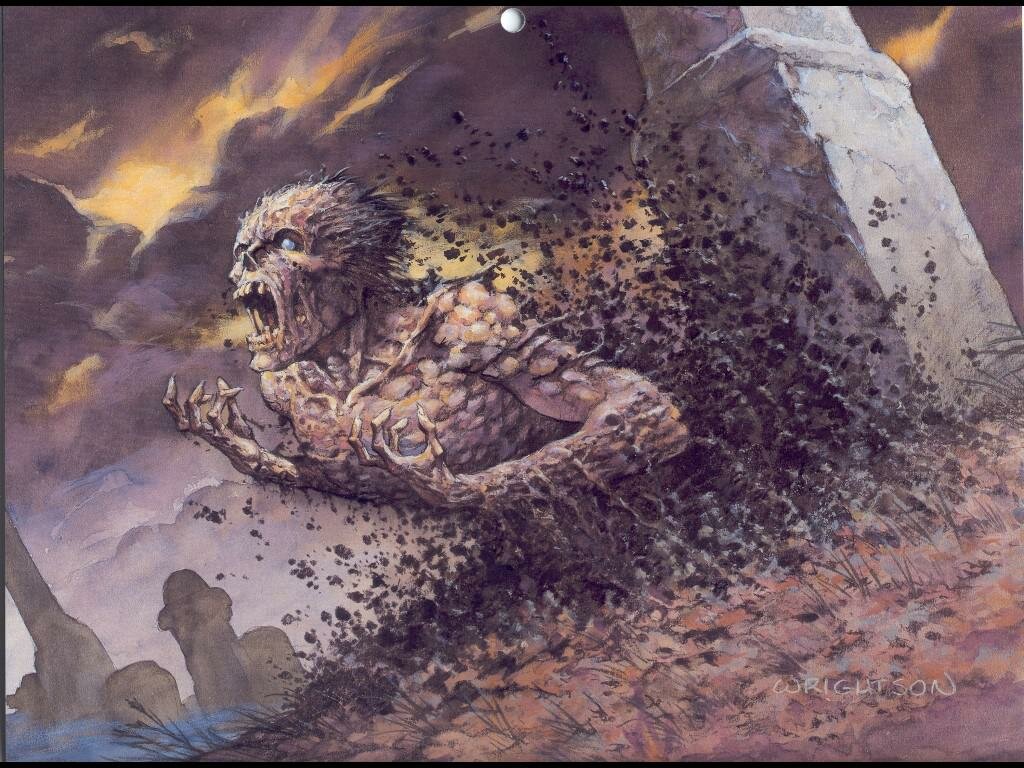Top 15 Amazing Asian People
Suggested by SMSChinese civilization was flourishing three thousand years ago. The Chinese Ancient Sages were eventually studied by Confucius, and included in his philosophy of living. Confucianism spread all over Asia and changed the course of its history. Buddha was born, and Buddhism spread and grew into many different sects. A number of amazing travelers took Buddhism with them to different Asian countries. Many ideas and discoveries from one Asian country eventually spread throughout Asia and beyond. There were sea-faring Asians travelling to the far reaches of their world long before the Europeans.
Events outside of Asia started to move the world in different directions. The Roman Empire came and went, as did others. Eventually Genghis Khan’s Mongol Empire reached the farthest of all. After the Jewish faith, Christianity became the predominant religion, and Islam was born. There were still amazing happenings in Asia, but many of these were not known outside of Asia. Japan and China both sought to keep European influences away, but eventually learned to live in the same world with the West.
Asian ideas of philosophy and religion, most notably Buddhism, are still alive today. China is now the most populous country in the word, with India behind it. There have been many amazing Asians over the last 3000 years. Some of them are famous and well-known around the world, while others are remembered in their home country and the region. Certain men, like Mahatma Gandhi and the current Dalai Lama, have inspired new generations of people around the world with their personal codes and lives of service.
15. Admiral Yi Sun-sin

Admiral Yi is one of Korea’s greatest historical figures. Famous for his successful naval tactics strategies, he has been compared to Lord Horatio Nelson. During the 1590’s, Toyotomi Hideyoshi had unified Japan, and attacked Korea. He was extremely successful on land. However, Admiral Yi stopped him at sea. Yi built up the Korean navy, and was undefeated in 23 naval battles over seven years. He was killed by a single bullet during the final battle. However he is revered in Korea for stopping the Japanese from annexing Korea, something they actually did centuries later in 1910.
14. King Mongkut Rama IV
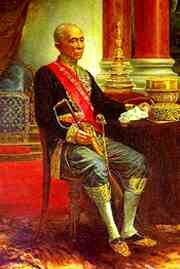
This king was the ruler of Thailand, then known as Siam, from 1851 to 1868. He was a forward looking and reform-minded monarch. He brought many European ideas and practices to Siam. While men had been prohibited from wearing shirts at court to show that they had no concealed weapons, King Mongkut decreed that men should wear shirts at court, so that visiting Europeans would not consider Siam barbaric. King Mongkut was interested in everything from astronomy to the law. He helped keep Siam strong, and was responsible for the country maintaining its independence from conquest by a European power, a challenge that would continue under his son’s reign.
Westerners know King Mongkut as the King in “The King and I” and imagine Yul Brenner. In fact, he did hire Anna Leonowens to teach his children. However, the Thai dispute the portrayal of the king as well as the country at that time. History shows that King Mongkut freed many of his wives so they could marry others. Despite what he says in the movie, he did not offer to send Abraham Lincoln elephants to help him win the Civil War. Hid did offer elephants to President James Buchanan as beasts of burden, but by the time the letter arrived, Lincoln was in the White House.
13. Duke of Zhou
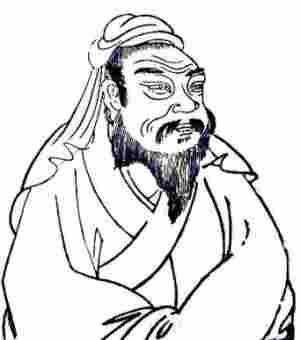
China was united by the Zhou, leading to the long Zhou Dynasty (1100 BCE–771 BCE). King Wu was the first Zhou king, and he came to power with the assistance of his brother, the Duke of Zhou. When King Wu died, the title was supposed to pass to his son, King Cheng, who was only a child. Duke Zhou took on the tasks of government but not the throne, serving as regent until the boy came of age. The fact that he did not steal the throne is admired, and he is remembered as “The First Virtuous Younger Brother” of the first Zhou king.
The Duke of Zhou contributed significantly to the development of what would later influence Confucius. He was perhaps the writer of what is called “The Chinese Book of Documents.” His Pronouncements and advisory pieces were mainly written to the people conquered by the Zhou, and also to King Cheng. Zhou’s writings are the heart of the Documents and were the most important parts later read by Confucius. Duke Zhou is considered one of the “Ancient Sages” of China. It is amazing that documents written a thousand years BCE still have influence today.
12. Zheng He

It may not have been Columbus who “discovered” the Americas. The Chinese had a naval fleet under Zheng He that some claim circumnavigated the globe in the early 1400’s. Zheng Hi was a Chinese Muslim from the southern part of China. When the Ming Army put down resistance in his area, he was captured and made into a eunuch at the age of 11. He was sent to the Imperial Court where he became a favorite of the Yongle Emperor. The Emperor wanted a Chinese navy to establish its presence and impress other countries with Chinese superiority. He made Zheng the admiral of a large fleet, with some 200 to 300 ships, many called “Treasure Ships” and near 28,000 crew. As he travelled, he gave and received gifts from Arabia, East Africa, Indonesia, India, and Siam. He used force when necessary and tried to curb the pirates operating in the area. How far he actually travelled is not clear. He was in possession of a map showing what appeared to be the Americas. It is considered possible that he travelled that far, and ever farther, circumnavigating the globe, although this is in dispute. He died on his last voyage. The next Emperor did not pursue Chinese naval superiority.
11. Akira Kurosawa
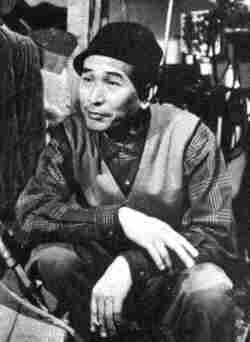
Akira Kurosawa was Japan’s greatest movie director, one of the best in the world. He is most often remembered for his films taking place during Japan’s samurai past, each with an indelible Kurowasa stamp
“Rashomon” portrays the rape of a woman and murder of her husband from multiple, contradictory points-of-view, and its influences are still felt today. It won the Golden Lion at the 1951 Venice Film Festival and an Academy Award for the Best Foreign Film in 1952. Kurosawa worked with Japanese film star Toshiro Mifune on this and many other movies.
“The Seven Samurai” (1954) won the Silver Lion at the Venice Film Festival. It was remade in the west as “The Magnificent Seven.” Kurosawa was influenced by Western drama, and the award winning “Ran” (1985) was his take on Shakespeare’s “King Lear.” The West was also influenced by him. George Lucas says that “The Hidden Fortress” was one of the inspirations for “Star Wars IV” and “VI.” Kurosawa worked with Lucas and Francis Ford Coppola to make “Kagemusha” (1979), a drama about historical events during the time just before Tokagawa Ieyausu united Japan (see number 7). “Kagemusha” won the Palm d’Or at the Cannes Film Festival in 1980. In 1989, Kurosawa was given an honorary Oscar by the American Academy.
10. Empress Wu Zetian (625-705) China
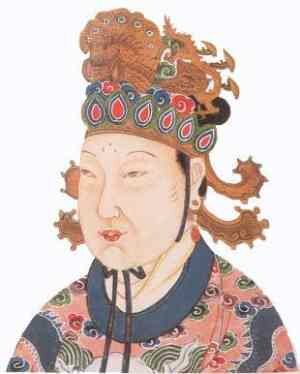
Wu Zetian was the only woman to actually rule China. Sent at a young age to the court, she became the concubine of Emperor Taizong and then Emperor Gaozong, surpassing his wife and other concubines to become his favorite. She heavily influenced the Emperor in all his decisions. She is believed to have poisoned a number of her rivals, as well as exiling or killing some of her own children. When Emperor Gaozong died in 683, Empress Wu ruled through her youngest son, but that was not enough. She declared herself the “Sacred and Divine Empress Regnant” and founded the short-lived second Zhou Dynasty.
While she was ruthless, certain of Wu Zetian’s actions changed China. She put Buddhism above Taoism. It has been said that after her rule there was better equality between the sexes in China. The Empress was removed from the throne in 705 and died later that year.
9. Prince Shotoku (574-622) Japan

Prince Shotoku of Japan (also called Prince Umayado) was responsible for political reforms and for bringing Buddhism into Japan on the 7th century. This was during the Asuka period, when he was regent.
Prince Shotoku was inspired by Confucian teachings from China, which were reflected in his political writings, including a constitution, and in his achievement of centralizing the government. He was also a Buddhist, and wrote commentaries on various Buddhist tracts. He had the first Buddhist temples in Japan built in Osaka.
8. Xuanzang
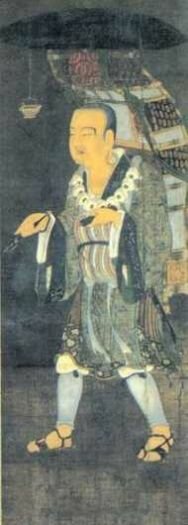
Xuanzang (or Xuan Dang) (602 or 603 – 664) China. Xuanzang was born into a scholarly and conservative Confucian family. After the death of his father, Xuanzang became a Buddhist monk at the early age of 20 due to his keen intelligence and knowledge.
Xuanzang was concerned that the Chinese translations of Buddhist documents were not accurate, so he determined to undertake the long journey to India, to get to the source material. His trip to India and back took seven years, along the so-called Silk Roads. It has been memorialized as a fictional book called “Journey to the West,” but he really did make the journey. He kept a record of his travels, called “Great Tang Records on the Western Regions” which is the main source of information about some of the areas at that time, including what are now Pakistan, India, Afghanistan, Uzbekistan, and Nepal. He brought back three copies of the Mahaprajnaparamita Sutra (the Heart Sutra) so that he could be sure of an accurate translation. He and his helpers translated all 600 chapters. He also translated some 657 Sanskrit Buddhist works. He had an enormous influence on Buddhism in China and left historians invaluable information about the period in which he lived.
7. Tokugawa Ieyasu
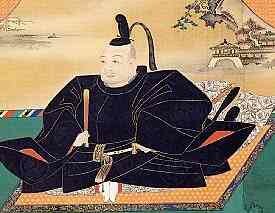
The third of Japan’s “Three Unifiers,” Ieyasu unified Japan under his leadership after the Battle of Sekigahara in 1600 (The second unifier was Toyotomi Hideyoshi. See number 15.) The emperor gave him the title of Shogun in 1603. This was the beginning of the Tokugawa Shogunate, which lasted from 1600 to 1868. There were many years of relative peace and prosperity. However, the social stratification was so strict that the common people often suffered under the Tokugawa Shogunate.
Tokagawa Ieyasu was deified, pronounced a god, after his death. The deification was said to protect his descendants from evil.
The novel “Shogun,” written by James Clavell, was about this period in Japan. He called Ieyasu Toranaga instead of Tokugawa, but most of the events in the book were real. It was made into one of the first television miniseries in the United States, starring Richard Chamberlain as a European shipwrecked on Japanese shores who Toranaga uses for his own purposes. In the miniseries, Toshiro Mifune played Toranaga.
6. Tenzin Gyatso, the 14th Dalai Lama
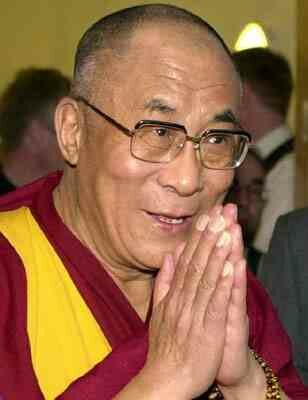
The fourteenth and current Dalai Lama, whose full name is Jetsun Jamphel Ngawang Lobsang Yeshe Tenzin Gyatso, is the spiritual leader of the main Tibetan Buddhist sect. The Dalai Lamas have been the leaders of the Galug school of Tibetan Buddhism for centuries. In 1659 the fifth Dalai Lama united Tibet, and the Dalia Lama was the head of the Tibetan government from the 17th century until 1959. The current Dalai Lama was forced into exile when China took control of the region in1959. The Tibetan government-in-exile resides in India. Tenzin Gyatso tries to maintain Tibetan traditions; the ongoing fight to free Tibet from China seems to be without end.
The charismatic Dalai Lama has travelled the world spreading messages of harmony, ethics and peace. He won the Nobel Peace Prize in 1989. He has received greater than a hundred honorary degrees and awards, including the U. S. Congressional Gold Medal in 2007.
The Dalai Lama is semi-retired from leading the government-in-exile. There have been many protests in Tibet and around the world about the Chinese treatment of the area. When a Dalai Lama dies, he is reincarnated into the next Dalai Lama. The current Dalai Lama said that he may not be reincarnated and that a Dalai Lama should not be reborn in a land that is not free.
5. Sun Yat-sen
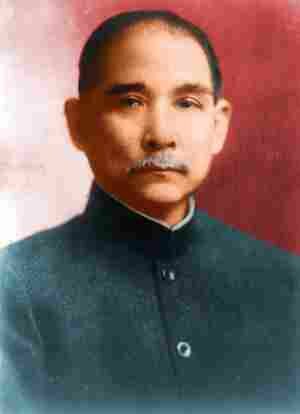
Sun Yat-sen. (1866 or 1870 – 1925) China. Sun Yat-sen, the Father of Modern China was a Nationalist leader and one of the main participants in the overthrow of the Qing Dynasty in the 1911 Chinese revolution. !n 1912, when the Republic of China was founded, he was its first provisional president. He also founded and acted as the first leader of the Kuomintang.
Sun Yat-sen lived all over the world, including spending his teenage years in Hawaii. He trained as a medical doctor in Hong Kong. He wanted China to embrace some of the modern, Western ideas including democracy. After a failed coup in 1895, he lived in exile. He spent years all over the world gathering ideas and building financial support for a new China. The revolution occurred when he was in the United States. He returned to China to take up the post as provisional president. Many years of fighting continued in China between different factions. By 1927, it would turn into civil war.
During these years Sun tried to establish a government based on the “Three Principles of the People” which include nationalism (as opposed to imperial domination), democracy (a constitutional government) and “government for the people” which may mean socialism or alternatively social welfare. He died in 1925 without seeing a unified China. He is still thought of highly in both China and Taiwan.
4. Mohandas Gandhi, the Mahatma
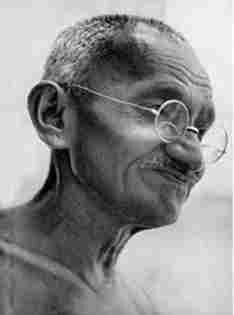
Mohandas Gandhi, called the Mahatma. (1869 – 1948) India. It is almost impossible to briefly summarize the life of such a person, the Father of India. Mohandas Gandhi was born to into a Hindu family, educated in India and then sent to England to become a barrister. He spent years in South Africa where he experienced blatant anti-Indian sentiment, and first used non-violent protest, or civil disobedience against that government.
When he returned to India he saw the suffering of many people, the peasants, laborers, and “untouchables” and others under British rule. He organized protests to help farmers who were being heavily taxed during times of famine. The protests in Kheda made Gandhi famous. People began to call him “Bapu” or father, as well as “Mathatma” which means Great Soul. He continued practices of civil disobedience and non-cooperation with the British essentially for the rest of his life. His goal was to free India from British rule, and to improve conditions for all her people. He kept the Hindu faith, lived in a self-sufficient community as a vegetarian, and dressed in traditional dhoti. During years of civil disobedience, he was imprisoned a number of times.
During World War II, Gandhi took the position that the British must “Quit India.” India would not fight for the British unless it was free. He was again imprisoned. The British did quit India, but not before it was separated into two countries, India and Pakistan. Gandhi was assassinated in 1948.
3. Genghis Khan

Genghis Khan. (1162-1227) Mongolia. Born into one of the Mongol tribes, he acquired the name Genghis Khan after consolidating the nomadic groups into the early Mongolian Empire in 1206. He is also called ruler of the Mongol Horde.
Genghis Khan and his armies conquered region after region. He was a brilliant military strategist, a great leader, and ferocious in battle. The Mongol Empire became the largest contiguous empire in the history of the world, from much of China on the west to “Georgia and Volga Bulgaria” south of Russia on the east. Genghis Khan died after his last campaign against the Chinese Tanguts in 1227. His heirs expanded the Mongol Empire even farther.
The empire was governed under a meritocracy, with relative peace for its people and religious tolerance. The Silk Roads were controlled under the Mongols, making travel easier. For these reason, history remembers some positive aspects of the Empire and Genghis Khan.
2. Confucius

Confucius. (551BCE – 479 BCE) China. Confucius was a great philosopher whose teachings emphasized correct personal and societal conduct. His teachings became the basics of the correct code of conduct for all Chinese for years after his death. No work definitively written by Confucius remains, but the “Analects of Confucius” were put together by his followers after his death. It was his students and disciples that spread what would be called Confucianism. Much of what is known about his life was recorded by Sima Qian, who wrote “Records of the Grand Historian” between 109 BCE and 91 BCE.
A basic precept of Confucianism is that education of individuals should lead to moral development. The basis of government would then be moral virtue and not coercion. Confucius believed in “ancestor worship,” respect of elders, and strong family loyalty. He emphasized the “Golden Rule” as did many other philosophers and religious leaders. He also stressed the Five Bonds: 1. Ruler to Subject, 2. Father to Son, 3. Husband to Wife, 4. Elder brother to Younger Brother, and 5. Friend to Friend. His belief system contained codes for correct governance by rulers, correct behavior of the governed, advancement based on merit, and other precepts which he believed would make a better society.
His disciples and commentators on his work continued to teach many of his principles. Confucianism first took hold in China, but spread throughout Asia, and much later, to Europe. It is still important in countries influenced by China
1. Buddha

Siddhartha Gautama, known as Buddha. (563 BCE – 483 BCE) Nepal/India. Siddhartha Gautama created of one of the five largest religions in the world. He was born into the ruling family of Kapilvastu (now in Nepal), married, and lived in the palace for 29 years, protected from the suffering in the world. He decided to leave the palace and first saw elderly, impoverished and miserable people. This propelled him to leave the royal life and train under ascetic hermits. He learned to meditate. But he wanted to move beyond his teachers. He and five companions fasted, put aside worldly goods, and practiced self-mortification. This did not achieve what he wanted. He found peace in meditation called jhana.
He discovered the “Middle Way,” moderation in between self-indulgence and self-mortification. Sitting under the Bodhi tree in India, he meditated until he achieved Nirvana (Enlightenment). He was now called Buddha which means “Enlightened One.” He understood the “Four Noble Truths” and the “Nine Characteristics” of all Buddhas.
He and his disciples travelled, gaining more companions and teaching. Each community following his teachings was called a Sangha. Those of his disciples who attained Enlightenment were called arahants. During his lifetime he visited many different areas in India and gained more followers. At the end of his life, he was said to enter Parinirvana, abandoning the earthly body.
His disciples continued to teach Buddhist philosophy, which accumulated more spiritual teachings as time went on, and also split into many different groups who interpret the Buddha’s teachings in disparate ways. Buddhism spread throughout Asia. There are an estimated 1.2 to 1.6 billion Buddhists across the world today, including practitioners in the United States, South America, and Europe. It is the fifth largest religion in the world.
Clearly, some of the Asians on this list from early history affected many groups of people and eventually the world that they knew. Confucius and Buddha in particular left legacies of codes of behavior and morality that influenced the Asian character. 750 years later, Gandhi brought a new way of political activism, personal behavior and change to India and the rest of the world. Gandhi influenced many people who used civil disobedience and non-violent protest, such as the Reverend Martin Luther King Jr. as well as President Barack Obama. The Dalai Lama also inspires people today. Most people in the United States as well as other Western countries do not learn much of this information. Knowing the feats of these “Amazing Asians” and understanding how they changed the course of history is important for anyone who really wants to understand the world.






